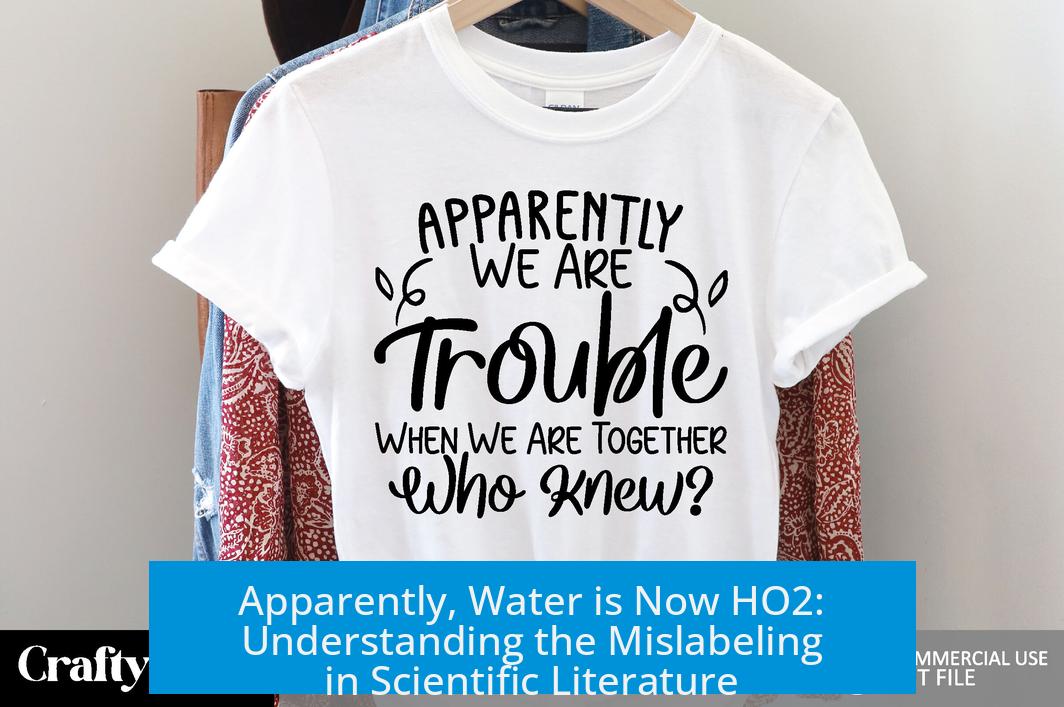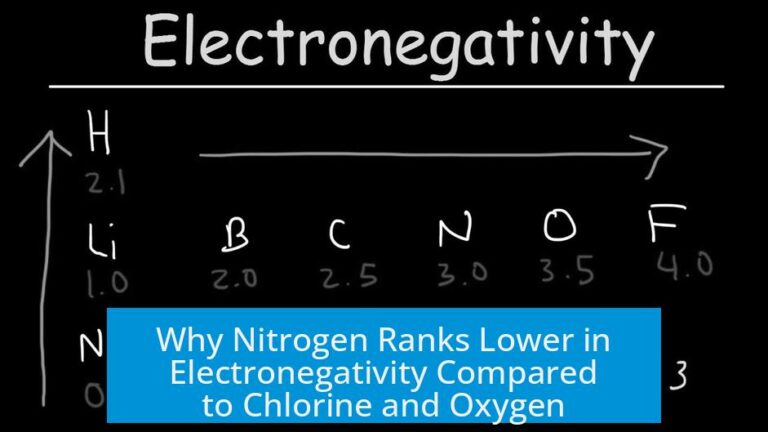Apparently, Water is Now HO2: Understanding the Mislabeling in Scientific Literature

Water has been mistakenly labeled as HO2 (hydroperoxyl radical) in a noted scientific publication. This error is a misrepresentation of the molecular identity of water (H2O) and has sparked reactions within the chemistry community about scientific rigor and review standards.
The Nature of the Error

The mislabeling originated from a review article published in a respected chemistry journal. In one of the figures, the molecule of water was depicted incorrectly as HO2 instead of H2O. The molecular structure featured the correct bond angle for water but displayed the wrong atomic components, showing one oxygen and two hydrogen atoms arranged inaccurately, confusing water with hydroperoxyl (HO2).
Hydroperoxyl (HO2) is a distinct chemical species known as a radical, involved in atmospheric reactions and combustion chemistry. Its properties are vastly different from those of water. This mistake likely occurred during the figure production process and was overlooked during proofreading and peer review.
Source and Context of the Mistake

The error appears to stem from image preparation rather than scientific misunderstanding. The chemical context of the article does not suggest the authors intended to describe or use hydroperoxyl as a solvent or chemical species in place of water.
It’s plausible that the figure was outsourced to a graphic designer unfamiliar with chemistry. When researchers hire external illustrators, misplacements and mislabelings can occur if the draft isn’t reviewed carefully. In contrast, many chemists prepare their own figures or have chemists review any external illustrations multiple times before submission to prevent such errors.
Scientific Oversight and Peer Review Challenges

This case has raised questions about the robustness of scientific review processes. How was such a glaring error allowed through multiple stages of review and editing? Many in the academic community express frustration, noting that careful proofreading typically eliminates basic mistakes in chemical labeling and representation.
Some commentators highlight the disconnect between editorial standards and the technical accuracy expected in chemistry papers. The occurrence points to potential weaknesses in the current peer review system, especially concerning graphical content. It emphasizes the necessity for authors and reviewers to verify not only textual accuracy but also the correctness of figures and molecular structures.
Community Reactions and Discussions

The reaction to the error mixes embarrassment, humor, and concern. Some scientists and readers found the mistaken HO2 label amusing, noting the figure’s visual oddity. Others worried about the impact on the authors’ and journal’s reputations.
- Some found humor in the mistake, joking about the “new and improved water.”
- Others expressed concern that such errors might undermine public trust in science.
- Questions arose about the role and necessity of elaborate graphics in scientific publications, with suggestions that papers should stand on data and text quality alone.
- Some reminded the community that mistakes happen and should not be overly sensationalized, advocating for more constructive criticism.
Clarifying Hydroperoxyl (HO2) vs. Water (H2O)
Water, a stable molecule composed of two hydrogen atoms and one oxygen atom, is fundamental to chemistry and life. Its molecular formula is H2O and its structure features a bent shape with an angle of approximately 104.5°. In contrast, hydroperoxyl (HO2) is a radical species with one hydrogen and two oxygen atoms. It participates in oxidation reactions and is reactive and unstable under normal conditions.
Confusing these two molecules is scientifically incorrect. Water acts as a solvent and is inert under many conditions, whereas hydroperoxyl is highly reactive and does not behave like water chemically or physically. Accurate molecular representation is critical for clarity in chemical literature and educational materials.
Summary of Key Points
- Water was erroneously labeled as HO2 in a published scientific figure.
- The mistake likely resulted from outsourcing figure production without sufficient scientific oversight.
- Hydroperoxyl (HO2) and water (H2O) are chemically distinct species and should not be confused.
- The error raises concerns about scientific review rigor, especially for graphical content.
- Community reactions range from humor to calls for improved editorial and proofreading standards.
Overall, this incident underscores the importance of careful figure preparation and review in scientific publishing to maintain accuracy and trustworthiness in the dissemination of chemical knowledge.
Apparently, Water is Now HO2: Unpacking a Curious Scientific Mix-Up
Is water really HO2 now? No, it isn’t. The whole hullabaloo about water being labeled as HO2 stems from an honest mistake in a scientific publication. While it has caused some laughs and head scratches in the chemistry community, rest assured that your trusty H2O remains unchanged.
Let’s dive into this quirky story and understand how this confusion came to be, why it matters, and what it teaches us about science, errors, and review processes.
The Mix-Up: Water or Hydroperoxyl?
In a certain review article published on the American Chemical Society’s website (source here), a figure mislabels the water molecule as HO2. This is not a new chemical discovery but rather a mix-up where the hydroperoxyl radical (HO2) was confused for water (H2O).
What’s the difference? Hydroperoxyl, abbreviated HO2, is a radical species involved in atmospheric chemistry and combustion processes, not your everyday drinking water. Water molecules have two hydrogens bonded to one oxygen (H-O-H) with a bond angle of about 104.5°, while HO2 has a very different chemical structure and behavior.
So, that figure portraying water as HO2 is like calling a cat a dog because they both have four legs. Close but no cigar.
How Did This Happen?
Turns out, the error likely blossomed during the figure preparation stage. A elements swap, a copy-paste slip, or maybe an outsourcing hiccup.
One chemistry insider suspects the figure was contracted out to a graphic designer unfamiliar with the deep chemical intricacies. The designer probably arranged atoms based on a brief without enough chemical vetting. Usually, scientists create or meticulously review their figures, but here, lapses happened.
This led to a hilarious contradiction: the bond angle of the molecule was accurate, but the atoms themselves were wrong. It’s like drawing a perfect circle but calling it a square. The result is funny yet eye-opening about the importance of attention to detail.
Community Reactions: Laughter, Embarrassment, and Skepticism
The chemistry community had mixed reactions. Many chuckled, admitting it took a while to notice the error. Some joked that the “new and improved water” must taste funny, poking fun at the absurdity.
Others worried about the authors’ reputations. Would their colleagues tease them mercilessly for this slip? Probably, but hopefully with good humor.
There’s also healthy skepticism from non-chemists: why include flashy graphics if they risk confusion? Shouldn’t the research speak for itself without gimmicks?
These responses highlight a bigger debate about the balance of style, clarity, and precision in scientific publishing. Fancy visuals help comprehension but can backfire when unchecked errors sneak in.
The Review Process: How Did It Get Past Peer Review?
Many people wonder how a simple but glaring error went unnoticed through multiple layers of review. The answer may lie in human nature and system flaws.
Scientists and reviewers focus heavily on the data, conclusions, and scientific argument — the “meat” of the paper. Sometimes, figures, especially graphical illustrations, are given less scrutiny, assumed to be accurate or finalized by experts.
But mistakes happen everywhere. The lesson? Double- or triple-check every detail, no matter how small.
What Can We Learn?
- Science is a human endeavor. Mistakes like this remind us that even rigorous processes are not infallible.
- Figures matter. A single mislabeled diagram can cause confusion or unintended humor and may even affect the paper’s credibility.
- Communication counts. Scientists need clear review workflows, especially when outsourcing graphical work.
- Readers should be curious. Spotting errors doesn’t undermine science; it encourages careful thinking.
- Hydroperoxyl (HO2 ) is not water. Know your molecules and never trust an image just because it looks pretty.
Practical Tips for Researchers and Readers
If you’re a researcher, make your own figures or request multiple checks before submission. When working with designers, insist on iterative reviews with chemist sign-offs.
For readers, don’t be afraid to question or double-check strange details. Scientific papers can have typos, sometimes even *major* ones, despite peer review.
Imagine a kid learning chemistry and spotting this error before an academic—proof that fresh eyes can help the whole community improve.
Final Thoughts: The Curious Case of HO2 Water
So, rest assured, water isn’t suddenly HO2. This humorous slip is a reminder of the tiny cracks in perfection’s facade that makes science human and approachable.
Next time you see a scientific diagram, take a close look. You might just spot the next big—or small—blunder. And if you do, have a laugh, learn something, then maybe send a polite email to the authors.
After all, science is about discovery, correction, and progress—sometimes with a side of humor.
What caused the labeling of water as HO2 in the scientific paper?
The error likely arose during figure preparation, possibly by an outsourced graphic designer. The mistake was a mislabeling where hydroperoxyl (HO2) was shown instead of water. The paper’s main content still referred to water correctly.
How did the scientific community react to the HO2 labeling error?
Reactions ranged from amusement to embarrassment. Some found it funny, while others questioned the review process and proofreading standards. There was also concern about how such an error could slip through peer review unnoticed.
Is HO2 the same as water in chemical terms?
No. HO2 is hydroperoxyl, a reactive oxygen species. Water is H2O and has different properties. The mistake in the paper confused these distinct molecules, which should not be substituted for one another.
Why do some papers include stylized graphics instead of straightforward figures?
Graphics aim to visually simplify complex information. However, some readers question their necessity if the paper’s text and data are clear enough. In this case, the graphic introduced confusion rather than clarity.
Could better proofreading have prevented the HO2 mistake?
Yes, thorough proofreading by multiple people typically catches such errors. Authors usually review figures multiple times, but here it seems the mistake was overlooked before publication. This highlights lapses in quality control.





Leave a Comment